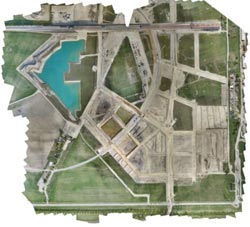Smart City in Vienna: Model Project Aspern

<br>
A living laboratory will be created in the next five years in the waterside district of Aspern, one of the largest urban development projects in Europe. Here power supply, building systems, intelligent power grids, and information and communication technologies will interact optimally.
The result will be the most efficient resource management possible, with maximum comfort for residents and users. On July 3, 2013, the partners signed the contract establishing the company Aspern Smart City Research, which has a budget of almost €40 million. The company will start work on October 1.
A multifunctional urban district will be created in Aspern, which is located in the northeastern part of Vienna. This area will include apartments and offices, a business, science, research, and education quarter. Altogether, it will cover around 240 hectares. Fifty percent of the space is reserved for public areas – plazas, parks, and recreation areas. Step by step, between now and 2030, the district will evolve into an intelligent city of the future, with 20,000 residents and 20,000 additional jobs.
This project represents an opportunity to develop a long-term integrated concept for an energy-optimized city district using appropriate technologies, products, and solutions in a real-world infrastructure. The goal is to make the whole system “smarter.” One step involves connecting buildings that have different functions, i.e. offices and apartments, to the low-voltage distribution network. In the future building control systems will manage the energy exchange between buildings and optimize energy consumption locally. This offers building operators the possibility to participate actively on the energy markets.
Information and communication technologies play an important role in this process, as does data evaluation. New IT solutions detect faults in the system, recognize inefficient consumption patterns, and identify potential opportunities for savings. Decentralized power generation from renewable energy sources will supply Aspern's electrical needs. Modern storage technologies will play an important role here.
Corporate Technology, Siemens global research department, will be in charge of the project. It will be working together with Siemens' building technicians and smart grid experts. The other partners include local power companies and development associations.
Media Contact
More Information:
http://www.siemens.com/innovationnewsAll latest news from the category: Architecture and Construction
Newest articles

Superradiant atoms could push the boundaries of how precisely time can be measured
Superradiant atoms can help us measure time more precisely than ever. In a new study, researchers from the University of Copenhagen present a new method for measuring the time interval,…

Ion thermoelectric conversion devices for near room temperature
The electrode sheet of the thermoelectric device consists of ionic hydrogel, which is sandwiched between the electrodes to form, and the Prussian blue on the electrode undergoes a redox reaction…

Zap Energy achieves 37-million-degree temperatures in a compact device
New publication reports record electron temperatures for a small-scale, sheared-flow-stabilized Z-pinch fusion device. In the nine decades since humans first produced fusion reactions, only a few fusion technologies have demonstrated…





















